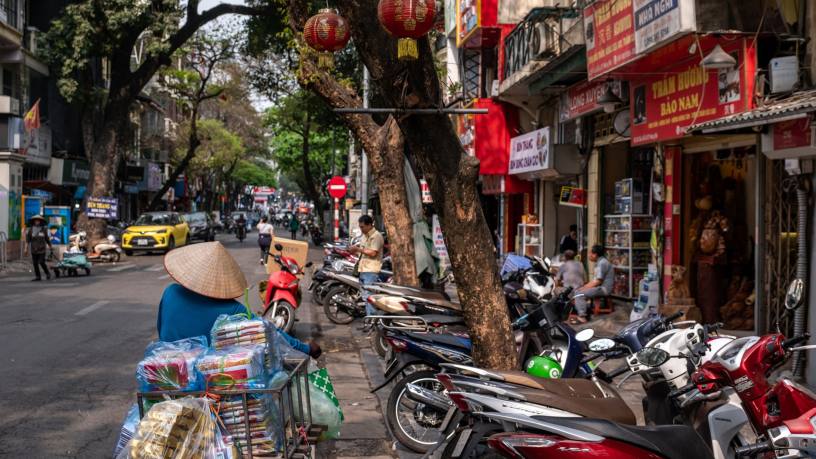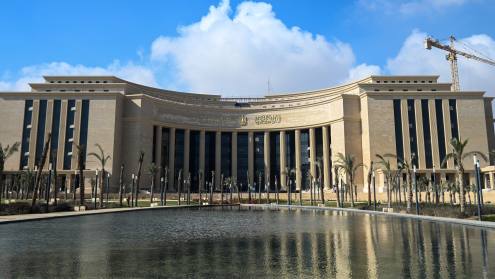Vietnam weathered the Covid-19 pandemic better than most south-east Asian economies, with gross domestic product (GDP) growth above 2% in 2020/21. It hit 8% in 2022, up from a low base, and is projected to reach 6.3% next year, according to World Bank estimates.
The government managed to keep the economy ticking over without resorting to massive relief programmes that would have raised public debt. Public debt has, in fact, fallen from 44% of GDP in 2018 to about 40% last year — thanks in part to a repositioning of the GDP number in 2019. But policy-makers, state enterprises and the emerging corporate sector face real challenges in 2023.
Export recovery
Vietnam has a two-pronged economy. There is the export-led economy, fuelled mainly by the foreign direct investment (FDI) that started to pour into Vietnam a decade ago, attracted by the low labour costs, a youthful population of 100 million and an open economy with 15 free trade agreements. More recently, the country is being seen as an alternative production base to China.
In 2022, FDI disbursements reached $22.4bn, helping to fuel exports of $371.8bn and a $11bn trade surplus. Exports to the US alone reached $109.4bn (up 13.6%), with a trade surplus of $94.9bn (up 17%).
This excessive dependence on the US market is arguably a weakness, as demonstrated in the last months of 2022 when exports started to slow. Overall exports declined year-on-year across the October 2022 to January 2023 period, but were up 11% year-on-year in February 2023.
“In terms of risks, our views a couple of months ago were a bit gloomier,” says Andrea Coppola, World Bank lead economist in Vietnam, of the country’s 6.3% growth outlook for 2023. “There will be an opportunity to upgrade our forecast in May/June,” he adds, pointing to better-than-expected employment, inflation and consumption figures in the US.
Michael Kokalari, chief economist at private investment firm VinaCapital, says: “Probably in the second half of the year, we will see orders start to recover once inventories get depleted in the US. And the other big thing happening is that Chinese tourists are expected to come back in full force in the second half of this year; they alone will add two percentage points to GDP, maybe more. Foreign tourists previously accounted for about 10% of GDP, pre-Covid.”
Chinese tourists are expected to come back in full force in the second half of this year
Given the ongoing tensions between the US and China, Vietnam is expected to remain a magnet for FDI from sources seeking to diversify their production outside of China. According to a 2019 poll conducted by the Japan External Trade Organization, around 40% of the Japanese firms looking to shift their overseas production cited Vietnam as their preferred choice. Even Chinese companies, especially those in the supply chain clusters for the electronics sector, have been shifting their production to Vietnam.
While Vietnam has become a production hub for electronics giants such as Samsung, LG and Apple in the past, much of the parts and components have been sourced by China-based companies, resulting in huge trade deficits with China, amounting to $60bn in 2022, an increase of 11% year-on-year.
Tightening credit
In addition to the export-led economy, there is the consumption-driven economy. Besides its dependence on the US for the lion’s share of its exports, Vietnam’s economy is also steered by the US dollar and US interest rates. Last year the dong deprecated nearly 10% against the dollar, despite efforts by the State Bank of Vietnam (SBV) to keep it firm, resulting in a 16% fall in foreign exchange reserves.
Inflation reached 5% in 2022, which also forced the central bank to follow the US in pushing up interest rates in the last three months of 2022, by a significant 200 basis points. This rapid rise exacerbated an already tight liquidity situation in Vietnam, sparked by an anti-corruption crackdown on several property firms and resulting in jitters among property buyers.
Last year’s anti-corruption campaign was not limited to the private sector, but also included the resignation of then president Nguyen Xuan Phuc and two former deputy prime ministers. Such campaigns have a way of bringing daily business to a standstill. “Because of the campaign, both sides — the business side and the state employee side — are very cautious,” says Le Dang Doanh, an independent Vietnamese economist.
Read more about Vietnam
In early 2023, the SBV reduced interest rates and raised the credit ceiling for banks, but it will take some time before Vietnamese consumers are going to feel comfortable buying a new home, given the questions raised by the crackdown on the legality of some of the existing developments. In a less politised environment, authorities might be more inclined to be lenient in approving land titles and construction permits.
There are some worries that the ‘quasi’ real estate crisis could turn into a quasi banking crisis, which could undermine fiscal stability. “A risk is if the banking system were to weaken the government’s fiscal position seriously, and if the government had to implement a lot of measures to prop up the banking system and take up a lot of debt … that could weaken the fiscal/debt metric we are looking at,” says Rain Yin, a sovereign analyst at S&P Ratings in Singapore. The ratings agency last year ungraded its sovereign rating for Vietnam to just one notch below investment grade.
There are also serious questions about what is going to happen in the bond market after a score of property companies have defaulted on their repayment schedules. The banks will obviously need to play their role, but the government could also inject liquidity into the system. “The government currently has more than $20bn of undisbursed infrastructure funds sitting at the central bank, and could run down some of its balance in order to meet its target of spending $30bn on infrastructure developments this year,” says Mr Kokalari.
Required investment
The government is notoriously slow about implementing infrastructure projects — neither Hanoi nor Ho Chi Minh City have serviceable mass transit trains, despite various projects being in the works for the past 10 years. Observers blame its multi-layered decision-making processes and its fear of falling victim to the kind of anti-corruption campaigns that took place last year.
There is similar caution when it comes to borrowing for public spending. The government will need to relax its thrifty ways if policy-makers are serious about achieving their future development goals. “If there is one country where I don’t see reckless borrowing, it’s Vietnam,” says the World Bank’s Mr Coppola. “This is a country that has a COP26 commitment to decarbonise its economy by 2050 [and] aims at becoming a high-income country by 2045.
“We estimate Vietnam will need to invest the equivalent of 6.8% of GDP per year between now and 2040. In such a context, Vietnam has space to borrow more,” he adds. With public debt at only 40% of GDP, it arguably has plenty of leeway to borrow more and could easily do so.
Meanwhile, the corporate sector could likewise be bolder in its sourcing of funding. A recent primer of Vietnam’s top 25 companies, compiled by S&P Ratings in Singapore, found two-thirds relied on short-term funding. Even the fledgling bond market in Vietnam only provides tenures of two years maximum, failing in its role of being a source of longer-term borrowing.
“What we found for these 25 companies was the average debt tenure is between one and two years, which is about half of the tenure of debt we had observed for large companies elsewhere in south-east Asia, which tends to be between three to four years,” says Xavier Jean, senior director of corporates at S&P Ratings in Singapore. “That has some implications for them because Vietnam is a country where the domestic banks don’t have much capital.”
Other options for Vietnamese corporations would be to take syndicated loans with foreign banks as well as local ones, which has become more popular of late, or to place their bond issues in more sophisticated markets such as Singapore or Thailand. “What they would get from this is a larger liquidity pool,” said Adisorn Singhsacha, CEO and founder of Twin Pine Group, a financial advisory boutique that has arranged the launch of several Laos bonds in Thailand.
“This is something they could do in the next two to seven years, while the market in Vietnam is strengthening. If a higher-rated company came and issued in Thailand, they could aim for a longer tenure. We have identified about 15–20 companies that are eligible and would do well in the Thai market,” he adds.












